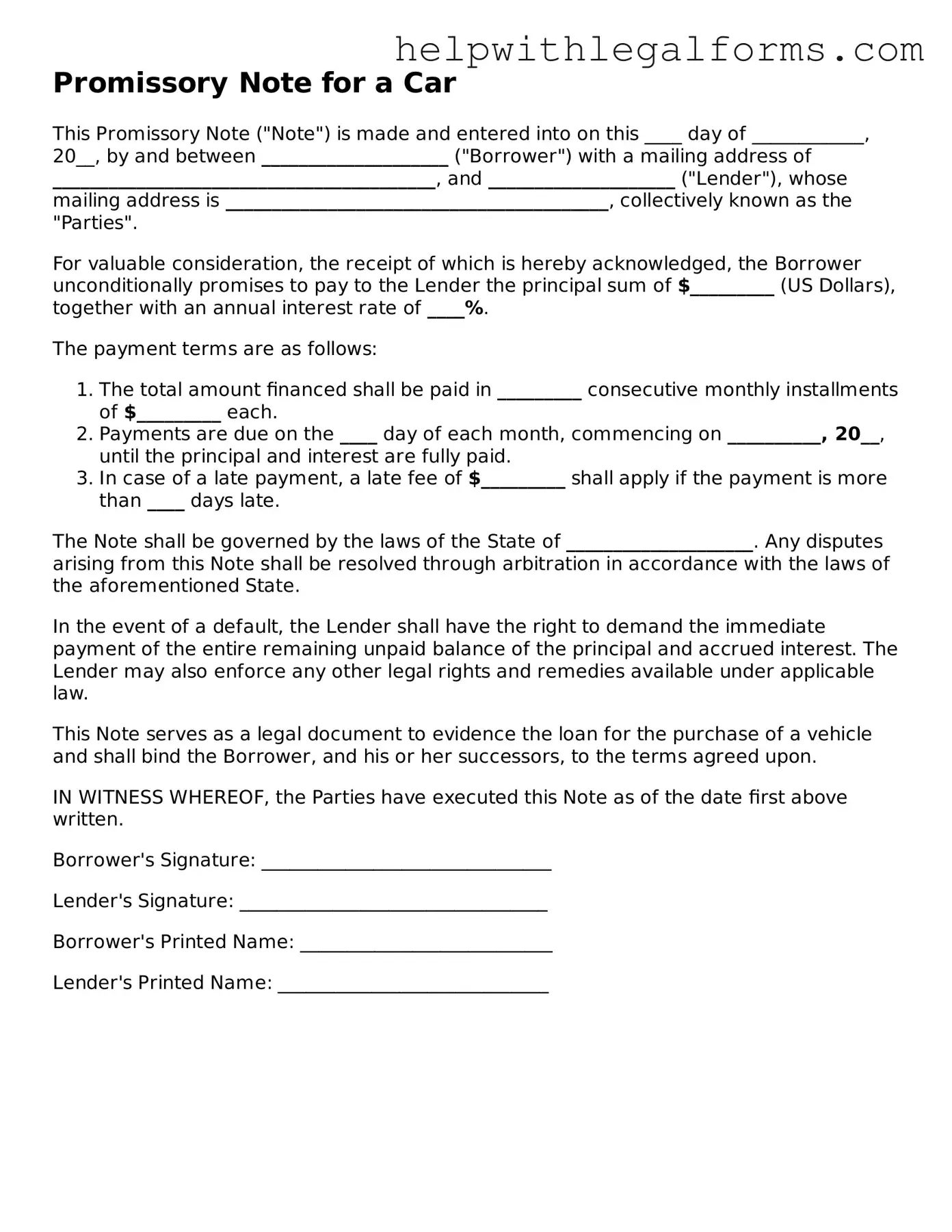Promissory Note for a Car
This Promissory Note ("Note") is made and entered into on this ____ day of ____________, 20__, by and between ____________________ ("Borrower") with a mailing address of _________________________________________, and ____________________ ("Lender"), whose mailing address is _________________________________________, collectively known as the "Parties".
For valuable consideration, the receipt of which is hereby acknowledged, the Borrower unconditionally promises to pay to the Lender the principal sum of $_________ (US Dollars), together with an annual interest rate of ____%.
The payment terms are as follows:
- The total amount financed shall be paid in _________ consecutive monthly installments of $_________ each.
- Payments are due on the ____ day of each month, commencing on __________, 20__, until the principal and interest are fully paid.
- In case of a late payment, a late fee of $_________ shall apply if the payment is more than ____ days late.
The Note shall be governed by the laws of the State of ____________________. Any disputes arising from this Note shall be resolved through arbitration in accordance with the laws of the aforementioned State.
In the event of a default, the Lender shall have the right to demand the immediate payment of the entire remaining unpaid balance of the principal and accrued interest. The Lender may also enforce any other legal rights and remedies available under applicable law.
This Note serves as a legal document to evidence the loan for the purchase of a vehicle and shall bind the Borrower, and his or her successors, to the terms agreed upon.
IN WITNESS WHEREOF, the Parties have executed this Note as of the date first above written.
Borrower's Signature: _______________________________
Lender's Signature: _________________________________
Borrower's Printed Name: ___________________________
Lender's Printed Name: _____________________________
